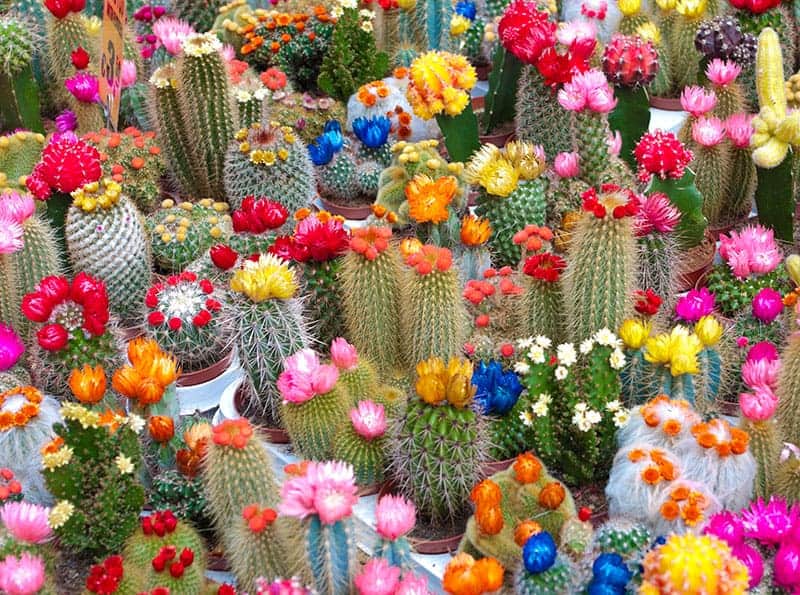When considering the myriad options for desert-inspired landscaping, the inclusion of cacti is undeniably compelling. Their unique adaptability, stunning forms, and striking colors incredibly enhance garden aesthetics while requiring minimal maintenance. This article provides a comprehensive overview of different types of cacti, focusing on some of the most popular varieties that can seamlessly integrate into your garden design.
Understanding the diverse classifications of cacti is essential for selecting the right species for your landscape. Here, we will delve into several distinct types, exploring their characteristics, cultivation requirements, and ideal uses.
Curved and Columnar Cactus: The Sentinel of Your Garden
Among the most iconic members of the cactus family is the saguaro, renowned for its towering stature and impressive arms. This monolithic cactus can grow to heights of up to 40 feet and live for over 150 years. It serves as a habitat for various wildlife, from birds to insects, making it a vital component of its ecosystem. For your garden, the saguaro stands majestically, providing a focal point that commands attention.
Another striking example within this category is the organ pipe cactus, which features elongated, upright stems that often branch out near the base. This cactus can reach heights of 20 feet and produces beautiful tubular flowers in late spring. Both the saguaro and organ pipe thrive in full sun and well-draining soils, proving their tenacity in arid conditions.
Soft and Fuzzy Cactus: The Tactile Experience
The fluffy teddy bear cactus, popularly known as the cholla, offers an intriguing alternative to the more rigid varieties. Characterized by its densely packed spines that resemble soft fur, it can be quite deceptive and should be approached with caution. The spines detach easily, posing a risk to unsuspecting gardeners. However, when planted thoughtfully, teddy bear cacti create a unique tactile experience in the landscape, encapsulating a playful juxtaposition of soft appearance and rigid defense.
In addition to providing visual appeal, fuzzy cacti are often habitat for birds and insects, enriching the biodiversity of your garden. While they may not require extensive care, they do prefer sandy soils and ample sunlight to flourish. Incorporating these whimsical varieties can lead to engaging interactions with visitors, whether in a residential or public garden space.
Low-Growing Cactus: The Ground Cover Marvels
Ground cover cacti, such as the creeping prickly pear and the lace cactus, offer versatility for gardeners aiming to create a vibrant carpet of greenery. The creeping prickly pear is particularly versatile, with stunning yellow flowers that bloom in the spring and luscious pads that can spread significantly if left unchecked. It serves well in rock gardens or as an edging plant, providing both color and texture.
The lace cactus, on the other hand, captivates with its distinctive ribs and delicate floral spikes. Compact and clumping, it thrives in pots and garden beds alike, making it a popular choice for indoor cultivation as well. These low-growing beauties prefer a well-drained soil mix and are well-suited for dry conditions. Utilizing these varieties in your landscape design not only offers aesthetic value but also encourages a sustainable approach to gardening.
Barrel Cactus: Nature’s Water Reservoir
Barrel cacti are remarkable for their spherical shapes and ribbed surfaces that store water, adapting their form to survive in arid climates. Renowned for varieties such as the golden barrel, which is adorned with golden spines and vibrant yellow flowers, this cactus is both practical and breathtaking. It’s a fantastic option for gardeners who desire a plant with low water needs yet seeks visual impact.
Barrel cacti generally thrive in full sun, well-draining soils, mimicking their native habitats while demanding minimal care. They can serve as stunning sculptures within arid landscapes, drawing the eye and stimulating curiosity. Furthermore, the JWT or Mexican giant barrel cactus is known for its extraordinary size and long lifespan, doubling as a striking centerpiece in any garden.
Understanding Soil and Sunlight Needs
Regardless of the specific type of cactus you choose to cultivate, it is imperative to understand their fundamental requirements. Cacti are succulent plants that flourish in well-draining soils, allowing excess water to escape, preventing root rot. They typically thrive in settings with full sunlight, although some may tolerate partial shade depending on the species.
Your soil mixture should consist of a blend designed explicitly for cacti or succulents, often incorporating sand, perlite, and potting soil to promote drainage. Regular care involves watering once the soil has dried out completely, observing the plant’s response to ensure it meets your garden’s environmental conditions.
Conclusion: Elevating Your Garden Aesthetics with Cacti
Incorporating various types of cacti into your garden designs elevates not only the visual appeal but also enhances the ecological balance of your outdoor space. With their resilient nature, unique appearances, and adaptability to arid conditions, cacti offer an excellent opportunity for sustainable gardening. From towering columnar varieties to compact ground covers, each type provides its own distinct charm and utility. By carefully choosing the right species for your environment, you can create a thriving oasis that celebrates the magnificence of these desert wonders.





Leave a Comment